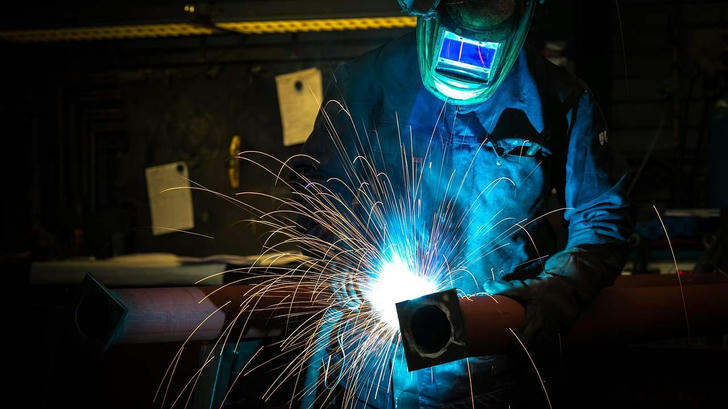Breaking into Welding Careers: No Experience Needed, No Age Limits
The American welding industry is experiencing a seismic shift. With infrastructure projects expanding and manufacturing sectors rebounding, employers are actively seeking workers who can step into welding roles—no prior experience required. Imagine earning over $48,000 annually within your first two years, with paid training and benefits like health insurance and retirement plans. This isn’t a hypothetical scenario; it’s the reality for thousands of Americans right now. Additionally, as industries pivot towards sustainable practices, welders are at the forefront, working on projects that are crucial to the transition to a greener economy.

Why Welding Is the Hidden Gem of Skilled Trades
Forget the outdated notion that welding demands years of apprenticeship or costly certifications. Today’s entry-level welding jobs prioritize adaptability over experience. Companies like Boeing and Lockheed Martin are investing in on-the-job training programs, allowing newcomers to earn while mastering essential skills. Flexible shifts—day, night, or weekend—cater to single parents, career changers, and retirees alike.
Furthermore, the perception of welding as a male-dominated field is changing. More women are entering the industry, bringing diverse perspectives and skills that enrich the workplace. Organizations like Women Who Weld are actively supporting this shift by offering training and mentorship for women interested in pursuing welding careers. This inclusive approach not only broadens the talent pool but also fosters a more dynamic and innovative work environment.
Take Jake Martinez, a 19-year-old from Houston, Texas, who landed a welding position at a shipbuilding company with zero experience. Within six months, he was certified in MIG welding and earning $28/hour. “They taught me everything,” he says. “Now I’m saving for a house.” Stories like Jake’s aren’t outliers; they’re becoming the norm. Additionally, many companies are creating mentorship programs that pair novice welders with seasoned professionals, fostering a supportive learning environment that accelerates skill development.
The Financial Upside You Won’t See Coming
Welding’s earning potential defies expectations. While the national median wage hovers around $23.53/hour, high-demand regions like Alaska and Hawaii offer entry-level welders up to $35/hour due to labor shortages. Even in lower-cost states like Texas, mid-career welders in aerospace or energy sectors regularly clear $70,000 annually.
But it’s not just about base pay. Employers now bundle benefits to attract talent:
Paid training programs (saving workers $5,000–$15,000 in certification costs)
401(k) plans with employer matching (averaging 4% contributions)
Full health coverage (including dental and vision in 78% of unionized roles)
Moreover, job stability in welding is often overlooked. Unlike many other trades, welders are consistently in demand due to the universal need for infrastructure maintenance and development. This stability is further enhanced by the growing emphasis on domestic manufacturing and production, which secures long-term employment opportunities for skilled welders.
Who’s Hiring—and Why You Should Act Fast
Major companies like General Electric and Chevron have publicly prioritized hiring welders, citing an aging workforce and retiring baby boomers. In Texas alone, there were more than 8,000 welding job openings last quarter. The problem? These positions aren't limited to young job seekers. You can apply for this position even if you're over 50 [no age, experience, gender restrictions]
Furthermore, the aging infrastructure in the United States requires significant refurbishment, creating additional demand for skilled welders. From bridges and highways to pipelines and skyscrapers, the need for robust, skilled labor is more pressing than ever. This trend is expected to continue as the federal government rolls out more infrastructure projects in the coming years.
Your Roadmap to Landing a Welding Job
Getting started is simpler than most realize:
Find local training hubs: Community colleges and vocational schools partner with employers
Apply for pre-hire programs: Companies like Tesla and SpaceX run “earn-and-learn” initiatives where you train on active projects.
Leverage government resources: Websites like Talent.com provide real-time salary comparisons by region to negotiate better offers.
Common concerns, like physical fitness requirements, are often overstated. Modern welding tech minimizes heavy lifting, and ADA-compliant workshops accommodate diverse needs. Moreover, the use of advanced safety gear and ergonomic equipment helps reduce workplace injuries and make the environment safer for all workers.
For those interested in advancing quickly, certifications in specialized areas such as underwater welding or aerospace welding can open doors to niche markets with even higher pay scales. Certifications like the American Welding Society (AWS) Certified Welder credential can enhance your employability and offer pathways to leadership roles.
The Future Is Yielding
Welding isn’t just a job—it’s a career launchpad. With automation and robotics reshaping the field, early entrants can pivot into roles like welding engineering (average salary: $101,260) or robotics supervision. The key is to start now, while demand outpaces supply and employers are desperate to upskill motivated candidates.
As infrastructure projects multiply and clean energy expands, the welding boom shows no signs of slowing. Whether you’re 18 or 58, the torch is lit—and the opportunities are molten hot. The industry is also seeing a rise in digital welding, which incorporates computer-aided design (CAD) software to improve precision and efficiency. This technological integration ensures that welders with digital skills will be invaluable assets in the future job market.
